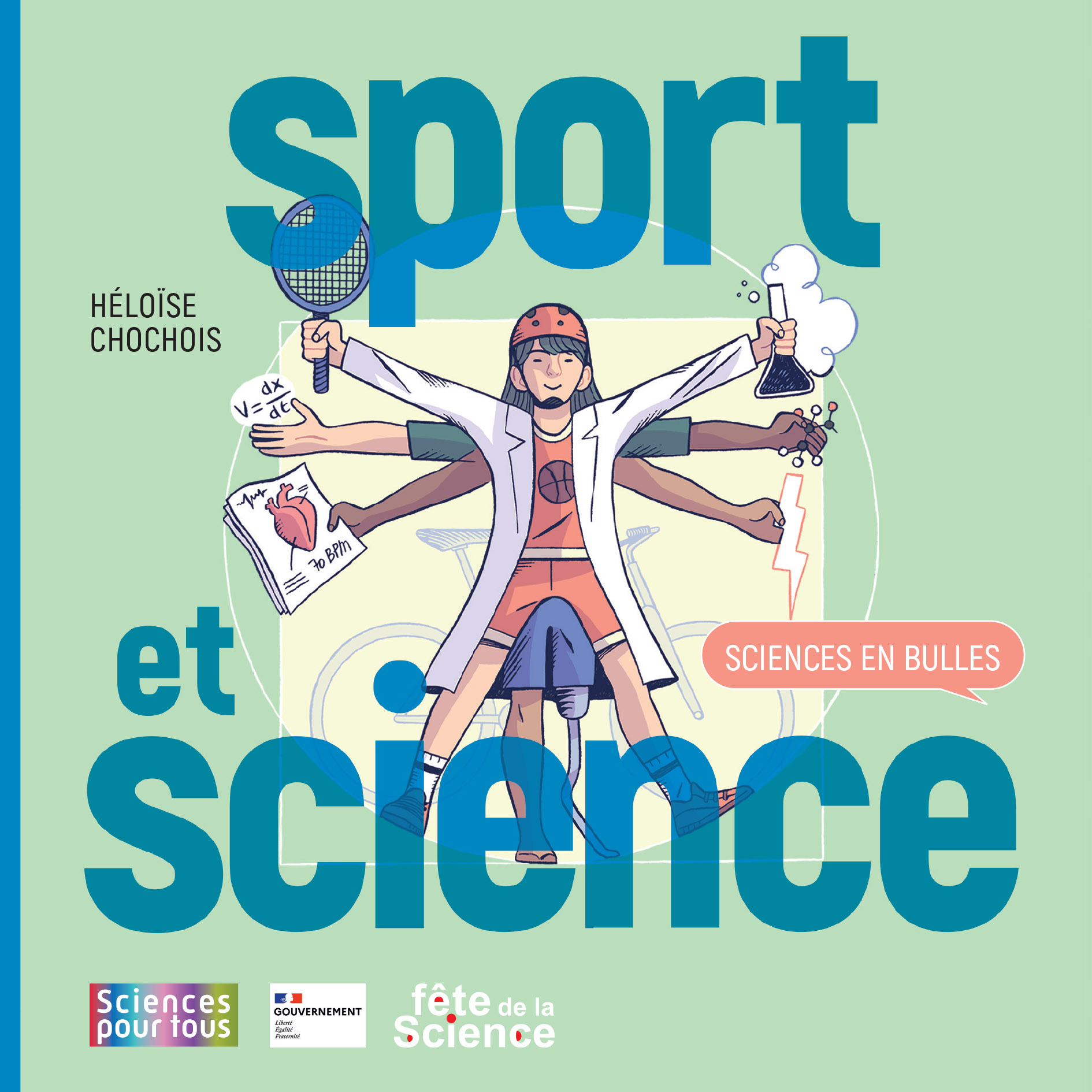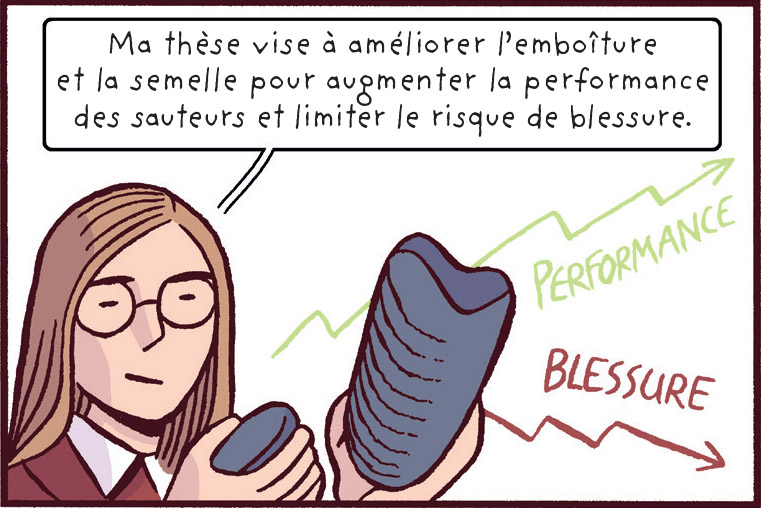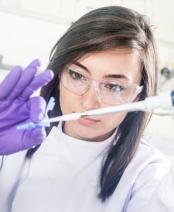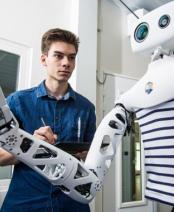Optimizing prostheses for disabled long jumpers

When Élodie Doyen decided to start a doctorate, she naturally turned to physics applied to sport, a field she was passionate about. She quickly realized that her training as a generalist engineer, with a component in biomechanics and sensory engineering, could benefit parasports and para-athletes. Her doctorate, prepared at the Institut Polytechnique de Paris and more specifically at the Institut des sciences de la mécanique et applications industrielles (IMSIA*) of the ENSTA Paris, involved optimizing tibial prostheses (i.e. for people with a tibial amputation), to enable Paralympic athletes practicing long jumping to increase their performance, while minimizing the risk of injury. Today, Elodie Doyen is a research engineer at ENSTA Paris. She is continuing her work by developing a tool to support medical practitioners in the design of lower-limb prostheses.
Her project is part of Science2024, a collective research program dedicated to supporting athletes in the run-up to the Paris Olympic Games, mainly through physics, mechanics and mathematics. During her thesis, Elodie Doyen worked with long-jump athletes with tibial amputations, including Dimitri Pavadé, Paralympic vice-champion at the 2020 Tokyo Games. All use a prosthesis made up of three parts: a socket by which the prosthesis is attached to the amputated limb, a carbon fiber blade, and a sole which comes into contact with the ground during strides.
Elodie Doyen's research involved optimizing two elements of the prosthesis: the sole, to enhance jumping performance, and the socket, to improve athlete comfort and reduce the risk of associated injuries. To perfect the sole, the young researcher (still a doctoral student at the time) worked on the absorption of jump vibrations and shocks, as well as on the shape of this part of the prosthesis. The aim: to help athletes tip the prosthesis more effectively with each stride. On the fitting side, Elodie Doyen has developed a method for measuring the pressure exerted on the stump, without impeding the athlete's movement. The measurement is carried out by placing sensors in the sleeve, a silicone part that is slipped on between the stump and the socket. Based on this data, and with the help of prosthetists, the shape of the socket can then be adapted to the morphology of each athlete. "Eventually, this measuring tool could also help all lower-limb amputees, regardless of whether they play high-level sport or not", explains the young scientist.
From sports physics to comics...
At the end of 2022, while still in the third year of her thesis, Elodie Doyen decided to apply for the "Sciences en bulles" initiative - supported by the French Ministry of Higher Education and Research and the Syndicat National de l'Edition - in order to popularize her thesis in comics and contribute to the dissemination of scientific knowledge. His application was selected as one of the ten doctoral subjects for the book, which at the time was devoted to the theme of "Science and Sport". In parallel with writing her manuscript, she worked on formulating her research in terms that could be understood by the general public, so that it could be adapted in bubbles by documentary comic book author Héloïse Chochois. "I like being able to make scientific knowledge accessible, particularly through analogies", concludes the young woman, who is always on the lookout for new projects applied to sport and popularization initiatives.


About:
Elodie Doyen is a research engineer at ENSTA's Institut des sciences de la mécanique et applications industrielles (IMSIA*).
*IMSIA: a joint research unit CEA, CNRS, EDF, ENSTA Paris, Institut Polytechnique de Paris, 91120 Palaiseau, France













